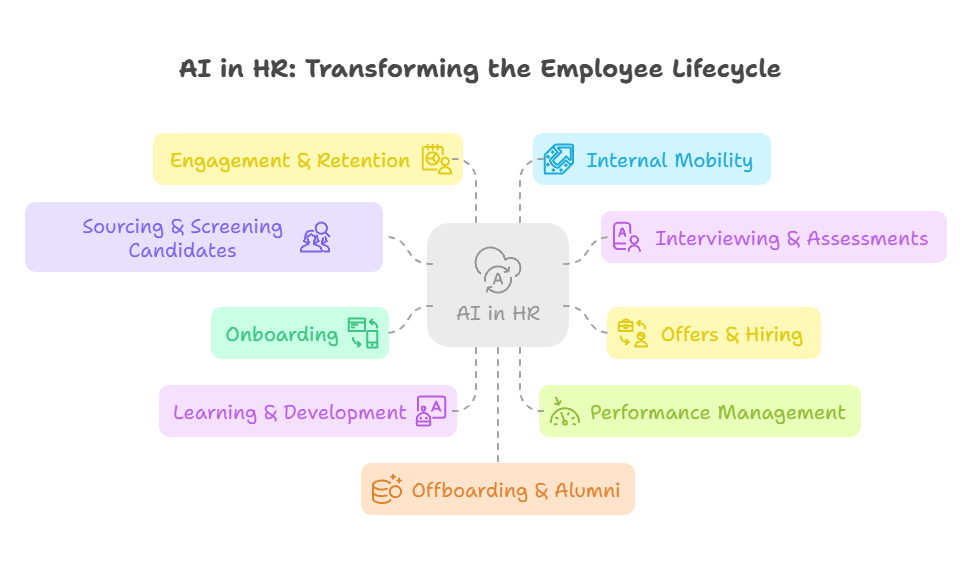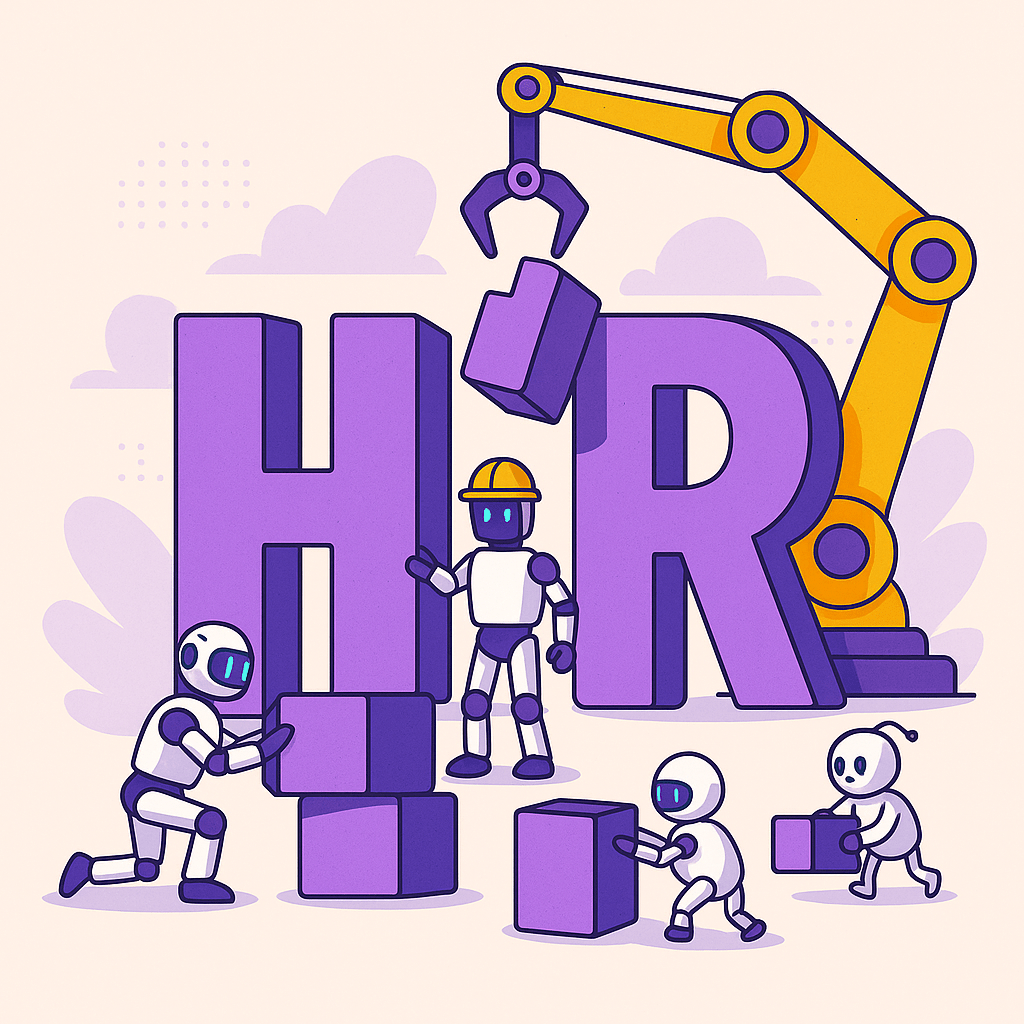Let’s talk about something that’s happening (quietly, but quickly): AI is shaking up HR from top to bottom.
From the first job application to the final offboarding process, AI is inserting itself into every part of the HR journey—and honestly, it’s about time.
For years, HR has been buried under paperwork, endless resume filtering, repetitive onboarding tasks, and outdated performance reviews. Now, thanks to generative AI, NLP, and machine learning, we’re finally seeing intelligent systems step in to do the heavy lifting.

Here’s a casual but complete walk through the HR lifecycle—hire to retire—and how AI is showing up at each step. Plus, who’s building the future right now.
1. Sourcing & Screening Candidates
Before: You post a job, get 500 resumes, and maybe read 30.
After AI: Tools like Eightfold, SeekOut, and HireVue do the hunting and filtering for you.
- AI auto-matches candidates based on skills—not just titles.
- Some even generate entire job descriptions based on team gaps.
- Video interviews? AI watches and scores them too.
Startup to know: Tezi – building AI tools that help recruiters source faster and shortlist smarter.
2. Interviewing & Assessments
Before: Everyone asks the same scripted questions. Tons of scheduling back-and-forth.
After AI:
- Harver offer gamified, bias-reducing assessments.
- ModernLoop uses AI to automate scheduling and interviewer coordination.
- Chatbots like Paradox’s Olivia can even conduct the first round.
3. Offers & Hiring
Before: Clunky back-and-forth emails, delays, and forgotten approvals.
After AI:
- Automated workflows with platforms like Greenhouse or Rippling.
- Real-time compensation benchmarking.
- Offer letter generation and digital signatures—done in minutes.
4. Onboarding
Before: Death by paperwork and boring presentations.
After AI:
- Chatbot-style onboarding with Leena AI.
- Personalized training paths from Workday or SAP SuccessFactors.
- IT provisioning, payroll setup, compliance docs—automated end-to-end.
5. Learning & Development
Before: One-size-fits-all training modules no one finishes.
After AI:
- Personalized learning journeys from Cornerstone, Degreed, or EdCast.
- AI recommends courses based on your role, goals, and gaps.
- Internal knowledge bots answer real-time questions (“How do I request time off?”)
6. Performance Management
Before: Annual reviews full of vague feedback and surprises.
After AI:
- Real-time feedback and OKR tracking with tools like Lattice or 15Five.
- Custom development plans created (or suggested) by AI.
7. Engagement & Retention
Before: One pulse survey a year, followed by… nothing.
After AI:
- Predictive analytics highlight flight risks before they resign.
- AI-powered coaching from platforms like BetterUp.
8. Internal Mobility
Before: People leave because they don’t know what roles exist internally.
After AI:
- Platforms like Gloat and Fuel50 use AI to map internal opportunities.
- Career paths are dynamic and personalized.
- Skill matching, mentorships, gigs—automatically surfaced.
9. Offboarding & Alumni
Before: Exit interview, hand in your laptop, goodbye.
After AI:
- Exit data analyzed to improve culture.
- Stay interviews powered by predictive models.
- Some orgs use AI to stay in touch with high-value alumni (future re-hires?).
The Big Picture
AI in HR isn’t about replacing people—it’s about freeing them up to do what they’re actually great at: listening, coaching, growing culture, and making the workplace more human.
If you’re in HR or building HR tech, now’s the time to experiment. Start small. Find one friction point in the hire-to-retire flow and see what AI can do.
Because honestly? HR is finally getting the tech glow-up it deserves.
